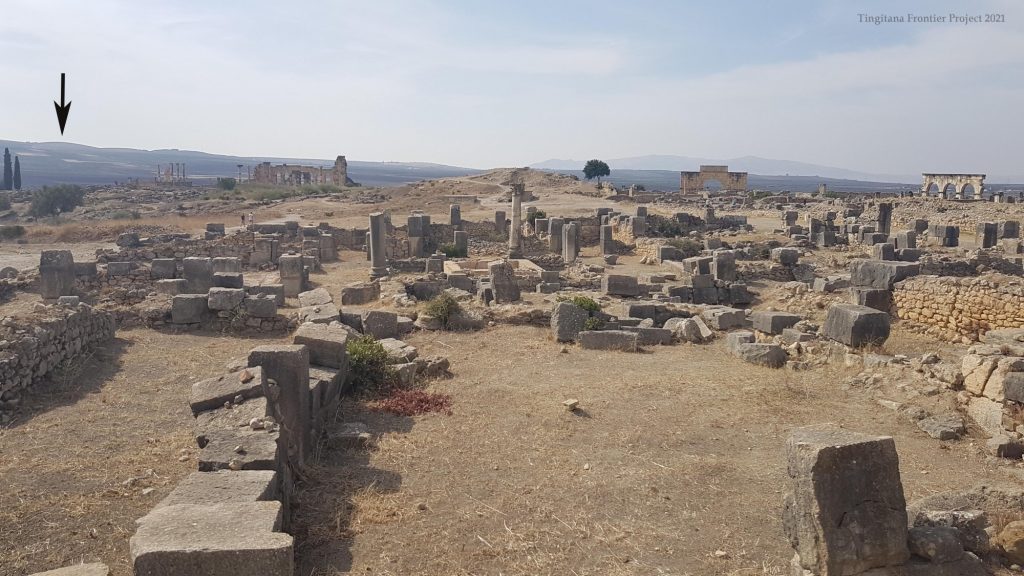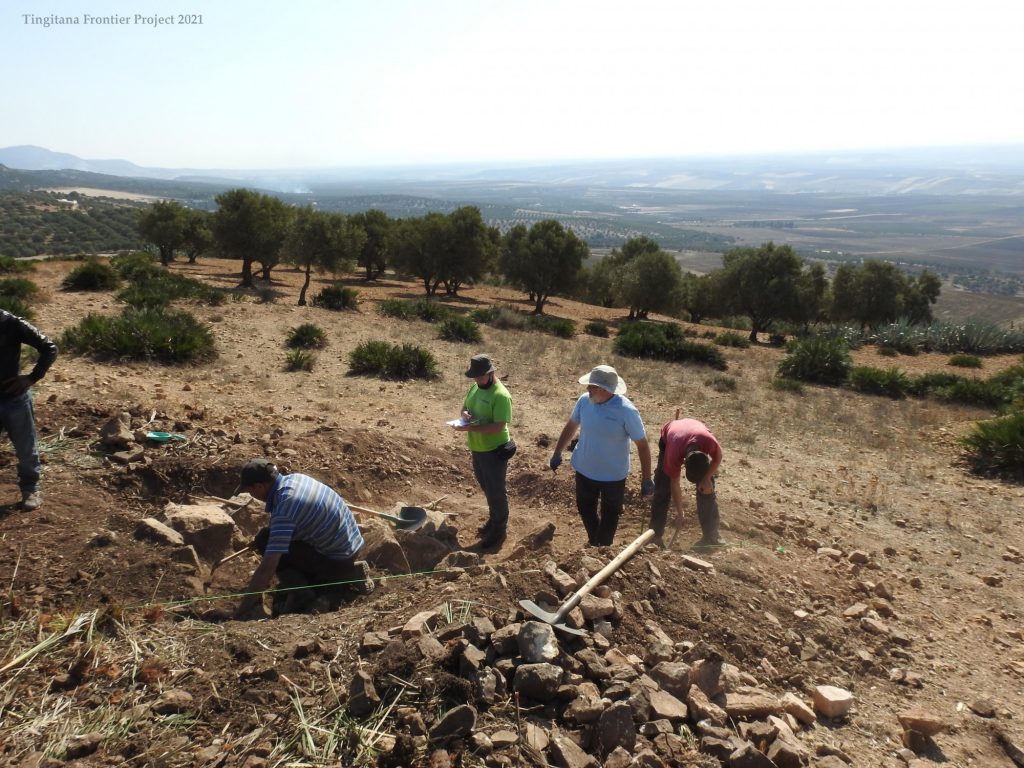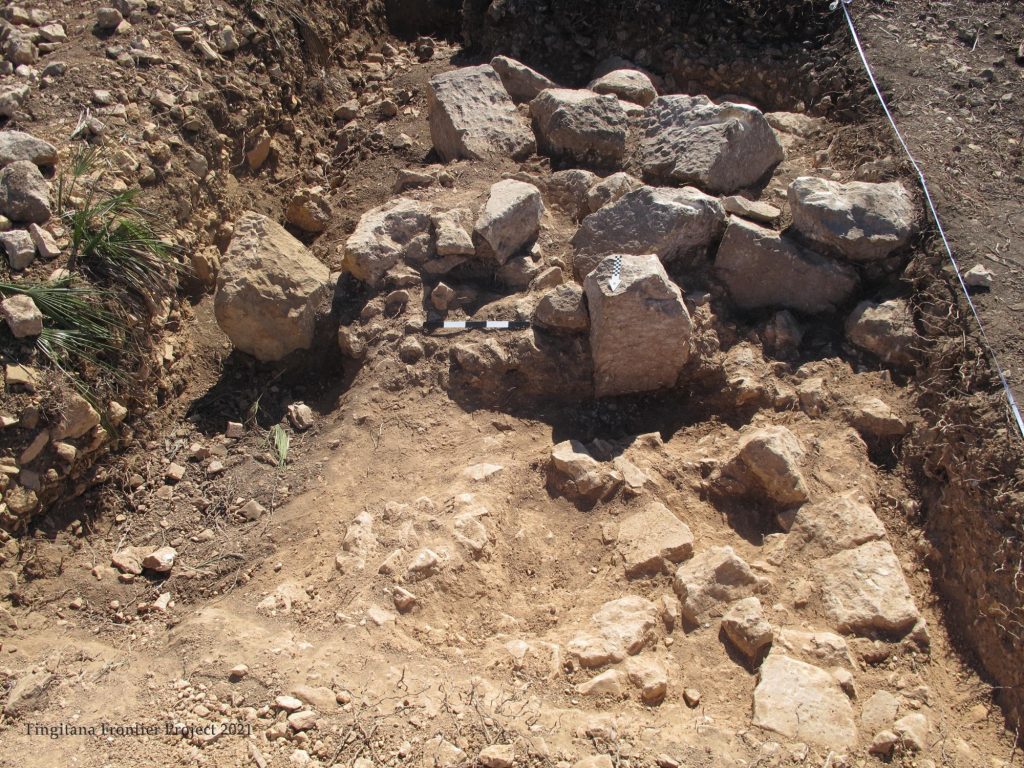Polish-Moroccan archaeological mission, which researches the Roman limes, unearthed remains of a Roman watchtower in late October and early November 2021. The watchtower was a part of the defence system of the ancient city of Volubilis. This research project is conducted within the framework of the agreement of mutual cooperation that was signed in July 2021 by the University of Warsaw and the National Institute of Archaeology and Cultural Heritage in Rabat (INSAP).

© K. Bartczak, CC BY-NC-SA 4.0 licence
Professor Radosław Karasiewicz-Szczypiorski and Maciej Czapski, MA, were in charge of the work of the Polish part of the team, while the Moroccan members were headed by Professor Aomar Akerraz (INSAP). The team is looking for elements of the defence system of ancient Volubilis, which was the biggest city in the province of Mauretania Tingitana in the Roman period (1st-4th century AD).

© M. Czapski, CC BY-NC-SA 4.0 licence
The system of border defence consisted of forts, where auxiliary troops (auxilia) were stationed, as well as watchtowers, which made vigilance of parts of the border possible. The search for the watchtowers was initiated in the 1920s by French researchers. Existing publications report 15 sites identified as surveillance posts, but none has been verified by excavations so far. The Polish and Moroccan archaeologists were the first to achieve this at the site of Bled el Mellali.

© M. Czapski, CC BY-NC-SA 4.0 licence
It was possible to confirm the existence of relics of a Roman watchtower in this place already in the initial days of the work. The building measured 5 x 5.5 m. Fragments of a stone structure were found inside. It might be a part of a staircase leading to the higher floors of the watchtower. The structure can be tentatively dated to the 2nd-3rd century AD on the basis of recovered remains of pottery.

© K. Bartczak, CC BY-NC-SA 4.0 licence
A digital visibility model was used to select the place for exploration. Visibility ranges of already known sites – forts of the auxiliary troops, are marked on the map. The site of Bled el Mellali is situated at the intersection of the ranges. As a result of confirmation of the existence of the watchtower in this place, it was possible to prove the effectiveness of the method of looking for surveillance posts by means of this model of the area.

© K. Bartczak, CC BY-NC-SA 4.0 licence
That was not the end to discoveries made in the promising first season of excavations. Just next to the watchtower we unearthed relics of another, earlier structure, measuring approx. 25 x 25 m. Carefully shaped stone blocks were found in two trial trenches. The shapes of some of the blocks suggest that they come from a rounded corner of an unknown building. At this stage of the studies we can only suppose that this structure was erected and used by Roman troops. The excavations will continue next year. Hopefully, their results will bring answers to many of the questions that interest the researchers.
The first phase of the excavations was preceded by two seasons of surface surveys and the results were published in “Polish Archaeology in Mediterranean”:
Czapski M., Atki M. (2020) Tingitana Frontier Project. Rapport préliminaire de recherche de la mission polono-marocaine dans la région de Volubilis au Maroc pendant la saison 2018, “Polish Archaeology in Mediterranean” 29 (2): 431–446.
You can follow us on Tingitana Frontier Project on Facebook!
This article may be freely reprinted with photographs, with reference to the source
Author:
Maciej Czapski – PhD student at the Faculty of Archaeology of the University of Warsaw, member of archaeological missions in Crimea, Georgia and Morocco.
Editing: M.M.
Polish proofreading: A.J.
Translation: B.M.
